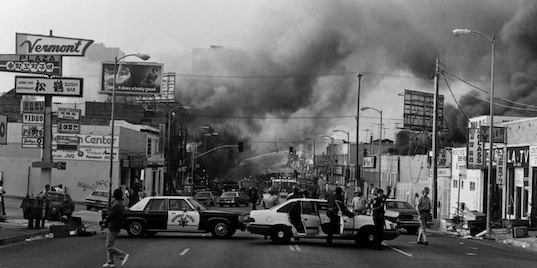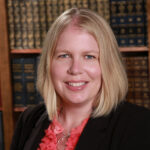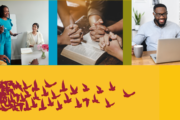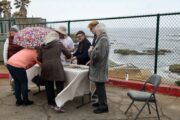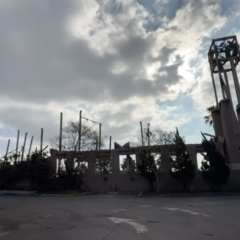Los Angeles mayor Eric Garcetti recently announced his commitment to hire a Chief Resilience Officer, who will be tasked with increasing the city’s ability to recover from man-made and natural disasters. This local development is part of a larger global initiative by the Rockefeller Foundation, which is promoting the idea that having a civic officer dedicated to coordinating disaster relief—and, more broadly, to aiding in the formulation of civic responses to chronic destabilizers like unemployment and inadequate transportation infrastructures—is essential to ensuring the optimal functioning of urban social institutions in both good times and bad.
We applaud Garcetti’s move, with one important caveat: Inviting and facilitating the contributions of non-governmental organizations that are willing to assist during a disaster should be at the top of the agenda for the person who fills this new position.
Since the “Charitable Choice” elements in Bill Clinton’s welfare reform legislation went into effect nearly two decades ago, responsibility for the provision of many social services has steadily devolved from federal and state governmental agencies to local authorities, faith-based groups and other NGOs. With this development in mind, we have spent several years investigating the roles that faith-based organizations (such as congregations) and other non-profits can play in the aftermath of disasters. We have interviewed leaders of congregations that are already providing everyday social services like clothing closets and soup kitchens, and who see the potential for these and similar programs to be ramped up to assist wider swaths of their communities in a time of crisis.
Our Center was founded out of the ashes of the 1992 civil unrest–one of modern L.A.’s greatest civic disasters. One legacy of those events is that religious groups have played a critical role in rebuilding communities and their economies.
Unfortunately, we found that despite the glowing rhetoric from an array of governmental agencies about the importance of faith groups in providing resources and services for their communities—in ordinary as well as extraordinary circumstances—there are fundamental disconnects between these groups and the current civic infrastructure that is tasked with disaster preparedness and response in Los Angeles. Despite their eagerness to help, congregations have regularly encountered significant barriers to their plans to build and grow their programs. Most significantly, public officials have often thwarted the aspirations of these congregations and demonstrated a significant lack of appreciation for the resource-potential of religious groups. Unnecessarily burdensome City and County ordinances also hampered the efforts of faith-based groups to help others. In some cases the barriers were so daunting that the groups simply backed away from the challenge or dramatically curtailed their ambitions.
For example, the relief ministry leader at Calvary Chapel Burbank spoke of his congregation’s desire to expand its feeding program with the explicit goal of becoming a larger contributor to the community in the aftermath of a disaster. Their efforts focused on renovating and expanding their kitchen to enable them to serve a larger number of people. Contractors initially estimated the project would require an expenditure of $100,000, but after talking with public officials, leaders of the congregation realized that permits, licenses and code upgrades would cause the cost to skyrocket to more than $2 million.
In another case, a small kitchen renovation undertaken by Khalsa Peace Corps took more than nine months, largely due to issues related to changing building codes. With the project halfway completed, and after laying a new floor to code, the code requirements changed. The faith-based organization was then required to remove the floor and replace it with one that met the standards set forth in the new requirements.
These may sound like extreme cases, but stories like these were related to us in several of our interviews. Given the potential of congregations to contribute essential services during a disaster response and recovery—and the increasing expectation, at higher levels of government, that they will do so—we believe civic leaders must find a way to streamline processes that incorporate faith-based organizations into critical social service infrastructures. This closer, ongoing and more deliberate networking of public, faith-based and non-profit service providers is essential not only to meet our needs today but also as part of broader efforts to be prepared in times of crisis.
In the near term, the new Chief Resilience Officer must address the fact that a cumbersome regime of licenses, codes and other restrictions currently hinders non-profit and faith-based organizations from providing disaster-related social services in addition to their normal programs and activities—despite calls from lawmakers and chief executives for greater non-profit and faith-based involvement in these areas. One of the highest priorities of the new CRO should be to find ways to streamline processes that could help non-governmental organizations meet critical everyday social service needs and to extend those services during and after a disaster. The City of Chicago, under Rahm Emanuel and with funding from Bloomberg Philanthropies, successfully worked to reduce city licensing requirements by 60 percent for all businesses, not just non-profits and faith-based groups.
Three further tasks must figure prominently on the to-do list of the city’s CRO over the longer term:
- First, he or she should engage the county government to create a mirror position. We would all benefit from a Los Angeles city-county partnership that would enable these two enormous bureaucracies to work in concert with each other on issues related to disaster preparedness and response as well as ongoing community resilience.
- Second, the CRO should network the faith community outreach coordinators in all city and county agencies that have them (it’s dismaying that these officials are not regularly in communication with one another).
- And, finally, the CRO should convene regular roundtable meetings that include governmental faith community coordinators and faith-based as well as non-profit social service providers.
This level of networking is simply a matter of good organizational practice—as the saying goes, a disaster zone is a terrible place to be exchanging business cards.
Medellín, San Francisco and Berkeley—cities with reputations for urban innovation—have already hired CROs in response to the Rockefeller initiative. Besides merely playing catch-up, Los Angeles should configure its program for resiliency in a way that acknowledges that the desire to serve others is the heart of the faith community. From one perspective, this is simply a means of positioning the city on the leading edge of national socio-political trends that have gaining momentum for the past 20 years. From another angle, integrating faith-based groups into the city’s resilience infrastructure is a way to maximize resources that already exist in every community that makes up this vast urban mosaic. Either way, that heart is ready to serve, but the barriers to service must come down.
Photo by Gary Leonard
Brie Loskota is the former executive director (2016-2021) of the USC Center for Religion and Civil Culture.
